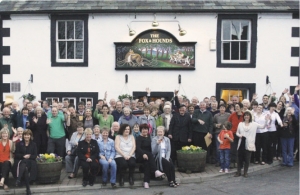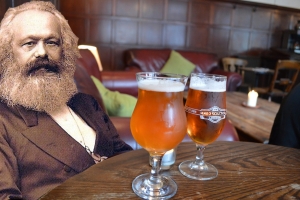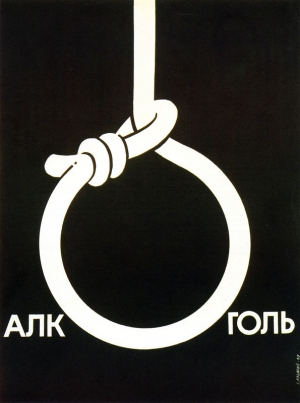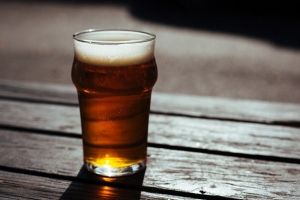
Beer for the many in 2019
Keith Flett surveys the beery landscape of 2019, and considers what a Labour Government could do about Big Beer
You don’t need a crystal ball to know that beer in 2019 will follow trends already evident in 2018. In craft beer there is a perpetual search for new styles or takes on old styles that will prove popular. For example in 2018 we saw a proliferation of Brut IPAs. 2019 will certainly see something different.
But beer and beer drinking are much more than style wars amongst craft brewers.
We might identify a couple of areas which may influence the broader area of pubs, beer and drinking in 2019. The first is Big Beer and the potential impact of Brexit (or not) and a possible recession. The second is a potential Labour Government and what it might do, or at least plan to do, in this area in its first 100 days in office.
Following ABInBev’s acquisition of Camden Town brewery in 2015, the news that Heineken was to take a significant stake in Beavertown in Tottenham was probably the most controversial brewing news of 2018. The funding is designed to get the long talked-about new brewery ‘Beaverworld’ built. Its location is in Enfield, not far from where ABI built a new brewery for Camden. The concern of course was – and is – that over a period Heineken will simply take total control as they did at the US brewer Lagunitas.
To any Marxist it is hardly news that capitalism is about consolidation in a quest for profit and ultimately, if left unregulated, monopoly. Also in 2018 Japanese brewer KIrin bought Fourpure in South London, while Carlsberg continued to develop its reshaping of London Fields Brewery
For those who like their beer local, community-based and small-scale Big Beer is anathema. I might broadly be in that category, but it is not one that is easy to sustain within the framework of market capitalism. Alternative structures of ownership, around co-operative production might work better.
The drinker might in any case query whether this actually makes any significant difference to the beer they end up drinking at the bar, or acquire from a supermarket or craft beer bottle shop.
The answer I think is problematic for the left. Some beer pundits claim that beer produced by Camden’s new ABI brewery or indeed by Beavertown’s outsourced operation in the Low Countries (the current brewery being at capacity) is as good as anything they’ve done before. With Big Beer comes quality control (hence a more consistent product) but also cost control (hence sometimes a weaker beer). Big Beer can and does compete on price to force competitors out of the market. Again however this can mean that decent beers such as Camden Pale Ale or Beavertown Neck Oil start to appear in bars where previously the choice was much less inspiring. And the aim of most craft brewers is to get better quality beers into the hands of the public.
Whether Big Beer plans further UK activity in the craft beer area in 2019 we shall see, but it’s worth keeping in mind that the companies in question operate on a world scale and may feel they have made sufficient headway in the UK for now.
More likely perhaps is the acquisition of small-ish craft brewers by larger or regional brewers. Again it is a familiar process of industrial concentration of ownership. The end of 2018 saw York Brewery rescued from administration by Black Sheep brewery for example, itself some years ago a spin-out from Theakstons Brewery, which it stands next door to it in Masham, North Yorkshire.
A new Labour Government
Should an incoming Labour Government aim to do anything about all of this?
In the first period of a new Labour Government there will be other priorities and in any case state intervention in a situation which has seen a huge expansion of breweries and beers in the last 10 years needs to be thought through carefully.
It was tax changes introduced by Labour that promoted the boom in the first place, and perhaps a first step would be an Inquiry, a device beloved of Labour Governments in the 1960s and 1970s, to assess what issues prevent it from developing further. How much for example the activities of Big Beer on pricing and supply are anti-competitive, balanced against the reality that the price of a pint of beer is already expensive for many people on low incomes.
Combined with that might be a look at the whole structure of the industry and whether alternative methods of ownership might work both in terms of breweries and of pubs. Here we could expect to hear a considerable amount of moaning and groaning from the Beerage – breweries who support and donate money to the Tory Party
There has been a long-running lobby, primarily by the larger regional breweries, who are now the core of the Beerage, to change tax rules on the amount of beer produced. Their argument is that the tax breaks given to smaller breweries impact unfavourably on them and that the cut-off point where standard tax is paid should be raised so that they also can benefit from it.
It is a complex issue not least because while socialists are unsympathetic to the politics of the Beerage, the regional brewers support a considerable number of unionised jobs, and a pub infrastructure in the areas they operate in.
This takes us into the wider area of pubs and how beer gets into the hands of the drinker. A future Labour Government might well look at cut-price beer in supermarkets (minimum alcohol pricing may impact this but is designed to address different issues) and controlling the market. One senses that taking on Tesco and Sainsbury’s might be an even tougher battle than the Beerage.
Beer for the many not the few will require not just inquiries and legislation but popular campaigning too.











